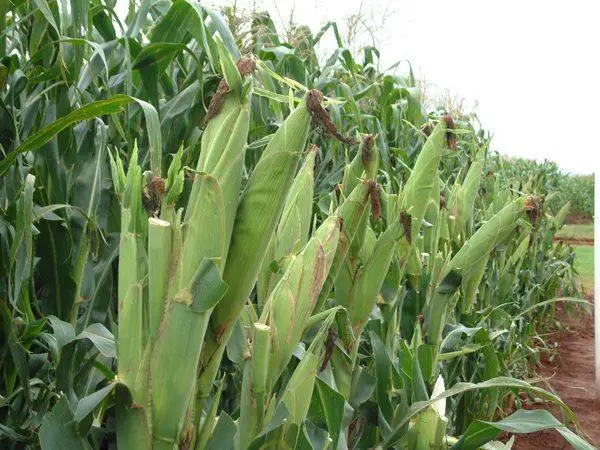Maize farming plays a significant role in Kenya’s agricultural sector and is a vital source of food for millions of people. Maize, also known as corn, is a staple crop that is widely cultivated throughout the country.
It is a versatile crop that can be used for human consumption, animal feed, and industrial purposes. Maize farming is a crucial source of income for many small-scale farmers in Kenya.
However, it is not without its challenges. Farmers face various obstacles, including pests and diseases, poor soil fertility, and unpredictable weather patterns. To overcome these challenges, farmers need to adopt modern farming practices and technologies.
In this article, we will explore the various aspects of maize farming in Kenya, including planting techniques, nutrient management, pest control, irrigation, harvesting, and marketing.
We will also discuss the latest trends and innovations in maize farming and provide tips and advice for farmers looking to increase their yields and profits.
Climatic and Soil Requirements for Maize Farming in Kenya
Maize is a warm-season crop that requires specific climate and soil conditions to grow successfully. The ideal climate for maize farming in Kenya is found in areas with an altitude ranging from 900 to 2,500 meters above sea level.
The minimum temperature required for germination and growth is 10-15°C. Maize thrives in areas with a temperature range of 20-30°C. Maize requires well-drained soils with a pH level of 5.8-7.0.
Loamy and sandy loam soils are suitable for maize farming in Kenya. It is important to note that maize is sensitive to soil compaction, and it is therefore necessary to ensure proper soil preparation before planting.
The soil fertility and capacity of many areas in Kenya are gradually decreasing due to rapid population growth that puts pressure on land resources. Depletion of soil in macronutrients such as N, P, and K, as well as important micronutrients like copper and zinc, can also be a challenge for maize farmers.
To ensure optimal maize growth and yield, it is recommended to conduct soil tests to determine the nutrient levels in the soil. Based on the test results, farmers can apply the appropriate fertilizers to improve soil fertility and ensure proper maize growth.
Maize Varieties in Kenya
Maize is a staple food crop in Kenya, and there are several varieties of maize seeds available for farmers to choose from. These varieties are grouped into two main categories: Hybrid Maize and Open Pollinated Maize (OPV).
Hybrid Maize
Hybrid maize is a cross between two or more inbred lines, resulting in a plant with superior characteristics such as high yields, disease resistance, and drought tolerance.
Hybrid maize varieties in Kenya include the DHO series (DHO 1, DHO 2, DHO 4), the Five series (H513, H515, H516), H614D, Duma 43, DK 8031, the Pannar series, among others.
These varieties have been developed to suit different agroecological zones and farmer preferences.
Hybrid maize varieties are generally more productive than OPV, with higher yields and better resistance to pests and diseases. They also have better drought tolerance, making them suitable for areas with limited rainfall.
However, hybrid maize seeds are more expensive than OPV seeds, and farmers need to purchase new seeds every planting season.
Open Pollinated Maize
Open Pollinated Maize (OPV) varieties are those that are reproduced by natural pollination, without any human intervention. OPV varieties in Kenya include Longe 5, H614, H621, H628, H629, H630, H631, H632, and H633.
These varieties are well adapted to different agroecological zones and are preferred by small-scale farmers due to their low cost and ability to produce seeds for the next planting season.
OPV varieties are generally less productive than hybrid maize, with lower yields and poorer resistance to pests and diseases. However, they are less expensive than hybrid maize seeds and can be saved for planting in the next season.
They are also preferred by farmers who practice organic farming as they do not require the use of chemical fertilizers and pesticides.
Land Preparation for Maize Farming in Kenya
Before planting maize, it is essential to prepare the land correctly. The first step is to clear the land of any weeds, debris, or other plant residues. This can be done manually or using herbicides.
However, manual clearing is recommended as it is cheaper and more environmentally friendly.
After clearing the land, the next step is to plow the land. Plowing helps to break up soil clods and create a fine seedbed. The depth of plowing should be between 15-20 cm to ensure good root development.
Farmers should avoid over-plowing as it can lead to soil erosion and loss of soil nutrients.
Once the land is plowed, it is recommended to harrow it. Harrowing helps to further break up soil clods and create a smooth seedbed. It also helps to mix soil nutrients evenly, making them readily available for plant uptake. Harrowing should be done when the soil is moist to avoid damaging the soil structure.
Farmers should also consider applying manure or fertilizer before planting maize. This helps to provide the necessary nutrients for plant growth. The type and amount of fertilizer or manure applied depend on the soil fertility level and the maize variety grown.
It is recommended to conduct a soil test to determine the soil nutrient status before applying any fertilizer or manure.
Maize Planting Techniques in Kenya
Maize is a staple crop in Kenya, and its cultivation is an important part of the country’s economy. Proper planting techniques are crucial to ensure a good yield. In this section, we will discuss the best practices for planting maize in Kenya.
Optimal Planting Time
The optimal time for planting maize in Kenya is during the rainy season. This is typically between March and May in the long rains season and October and December in the short rains season.
Planting during the rainy season ensures that the soil has enough moisture to support the growth of the maize plant.
Planting Density
The optimal planting density for maize in Kenya is between 25,000 and 35,000 plants per hectare. Planting at this density ensures that the maize plants have enough space to grow and develop properly.
Farmers can use a planting machine or manually plant the maize seeds in rows with a spacing of 75cm between rows and 30cm between plants.
Soil Preparation
Before planting, the soil should be prepared to ensure that it has the right nutrients and structure to support the growth of the maize plant. The soil should be tilled and cleared of any weeds or debris.
Farmers can also add organic matter such as manure or compost to improve the soil’s fertility.
Fertilizer Application
Maize requires a lot of nutrients to grow properly, and farmers should apply fertilizer to the soil before planting. The type and amount of fertilizer to be used depends on the soil’s fertility and the maize variety being planted.
Farmers can consult with agricultural extension officers to determine the appropriate fertilizer to use.
Pest and Disease Control
Maize is susceptible to a variety of pests and diseases that can significantly reduce the yield. Farmers should take measures to control pests and diseases before and after planting. This can include using pest-resistant maize varieties, applying pesticides, and practicing crop rotation.
By following these planting techniques, farmers in Kenya can ensure a good yield of maize and contribute to the country’s food security and economy.
Pest and Disease Control in Maize Farming in Kenya
Maize farming in Kenya is prone to a variety of pests and diseases that can significantly reduce crop yields, quality, and profitability. Effective pest and disease control measures are essential to ensure successful maize farming in Kenya.
Common Pests in Maize Farming in Kenya
The most common pests that attack maize crops in Kenya include stem borers, armyworms, cutworms, and aphids. These pests can cause significant damage to maize crops, leading to reduced yields and quality. Farmers can use various pest control measures to manage these pests effectively.
Pest Control Measures in Maize Farming in Kenya
Farmers can use several pest control measures to manage pests in maize farming in Kenya. Some of the most effective pest control measures include:
- Field sanitation: Farmers should remove and destroy crop residues after harvesting to reduce the survival of pests and diseases.
- Crop rotation: Farmers should rotate maize with other crops to break the life cycle of pests and diseases.
- Use of resistant varieties: Farmers should plant maize varieties that are resistant to pests and diseases.
- Use of trap crops: Farmers can use trap crops such as Desmodium, Napier grass, and Sudan grass to attract and trap pests, reducing their impact on maize crops.
- Biological control: Farmers can use natural enemies such as parasitic wasps and predators to control pests.
- Chemical control: Farmers can use pesticides to control pests, but they should follow the recommended application rates and safety precautions to avoid environmental contamination and health risks.
Common Diseases in Maize Farming in Kenya
Maize crops in Kenya are also vulnerable to various diseases, including maize streak virus, maize lethal necrosis, and grey leaf spot. These diseases can cause significant yield losses and reduce crop quality.
Disease Control Measures in Maize Farming in Kenya
Farmers can use several disease control measures to manage diseases in maize farming in Kenya. Some of the most effective disease control measures include:
- Use of disease-free seeds: Farmers should use certified disease-free seeds to reduce the risk of disease transmission.
- Crop rotation: Farmers should rotate maize with other crops to break the life cycle of diseases.
- Field sanitation: Farmers should remove and destroy crop residues after harvesting to reduce the survival of diseases.
- Use of resistant varieties: Farmers should plant maize varieties that are resistant to diseases.
- Chemical control: Farmers can use fungicides to control diseases, but they should follow the recommended application rates and safety precautions to avoid environmental contamination and health risks.
Weed Management in Maize Farming
Weed management is an essential aspect of maize farming in Kenya. Weeds compete with maize for nutrients, water, and light, which can significantly reduce maize yields.
Effective weed management practices can help farmers to control weeds and improve maize yields.
Pre-Planting Weed Management
Pre-planting weed management involves controlling weeds before planting maize. This can be achieved through various methods, including:
- Tillage: This involves plowing the field to uproot existing weeds and prevent new weed growth. It can be done using a tractor or hand-held tools.
- Use of herbicides: Farmers can use herbicides to control weeds before planting maize. Herbicides work by killing existing weeds and preventing new weed growth. It is essential to use herbicides that are approved for use in maize farming in Kenya.
Post-Planting Weed Management
Post-planting weed management involves controlling weeds after planting maize. This can be achieved through various methods, including:
- Hand weeding: This involves manually removing weeds from the maize field. It can be done using hand-held tools, such as hoes and machetes.
- Use of herbicides: Farmers can use herbicides to control weeds after planting maize. It is essential to use herbicides that are approved for use in maize farming in Kenya.
- Mulching: This involves covering the soil around the maize plants with organic materials, such as straw, leaves, or grass. Mulching can help to suppress weed growth by preventing sunlight from reaching the soil.
Integrated Weed Management
Integrated weed management involves combining various weed control methods to achieve optimal weed control. This can include a combination of pre-planting and post-planting weed management practices.
Table 1 below shows some herbicides that are approved for use in maize farming in Kenya.
| Herbicide | Active Ingredient | Target Weeds |
|---|---|---|
| Atrazine | Atrazine | Broadleaf and grass weeds |
| Dual Gold | S-Metolachlor | Grass weeds |
| Lumax | S-Metolachlor + Atrazine | Broadleaf and grass weeds |
| Roundup PowerMax | Glyphosate | Broad-spectrum weed control |
It is essential for farmers to follow the recommended application rates and safety precautions when using herbicides. Overuse or misuse of herbicides can lead to environmental contamination and health hazards.
Eeffective weed management practices are crucial for maize farming in Kenya. Farmers should adopt integrated weed management practices that combine various weed control methods to achieve optimal weed control. By doing so, they can improve maize yields and increase their profits.
Harvesting and Post-Harvest Management
Harvesting of maize in Kenya is mainly done by hand for small-scale farmers. The maize stalks are cut using sickles or machetes and stooked on the farm or carried to the storage area. Once harvested, the maize needs to be dried before storage to prevent mold growth and rotting.
Drying can be done using different methods such as sun drying, mechanical drying, or a combination of both. Sun drying is the most common method used in Kenya due to its low cost. However, it is important to ensure that the maize is spread out in a thin layer to dry evenly and prevent contamination.
After drying, the maize can be stored in different ways such as in bags, cribs, or silos. Bags are the most common storage method used by small-scale farmers. It is important to ensure that the bags are clean and dry before storing the maize to prevent mold growth.
Maize is susceptible to pests such as weevils, moths, and rodents. To prevent pest infestation, it is important to fumigate the maize before storage using approved chemicals. It is also important to inspect the maize regularly during storage to detect any signs of pest infestation and take appropriate action.
Post-harvest losses in maize can be reduced by adopting good harvesting and storage practices. The Kenya Agricultural and Livestock Research Organization (KALRO) recommends the use of improved maize varieties that have high yield potential, early maturity, and good resistance to pests and diseases. KALRO also recommends the use of proper storage facilities such as hermetic bags and metal silos to reduce post-harvest losses.
Challenges and Opportunities in Maize Farming in Kenya
Maize farming in Kenya faces several challenges that hinder its growth and development. However, there are also opportunities that farmers can take advantage of to improve their yields and profitability.
Challenges
One of the main challenges facing maize farming in Kenya is the high cost of inputs such as seeds, fertilizers, and pesticides. Many small-scale farmers cannot afford to purchase these inputs, which limits their productivity and profitability.
Additionally, the lack of access to credit and financing further exacerbates this problem.
Another challenge is the prevalence of pests and diseases that affect maize crops. Maize lethal necrosis disease (MLND) is a particularly devastating disease that has caused significant losses for farmers in Kenya.
Other pests and diseases that affect maize crops include fall armyworm, stem borers, and maize streak virus.
Climate change is also a significant challenge for maize farming in Kenya. Erratic rainfall patterns and prolonged droughts have led to reduced yields and crop failures in many parts of the country.
Farmers need to adopt climate-smart agricultural practices to mitigate the effects of climate change and ensure the sustainability of their farms.
Opportunities
Despite the challenges facing maize farming in Kenya, there are also several opportunities that farmers can take advantage of to improve their yields and profitability. Some of these opportunities include:
- Adopting new technologies: Farmers can use new technologies such as precision farming, drip irrigation, and mechanization to increase their productivity and reduce their costs.
- Value addition: Farmers can add value to their maize crops by processing them into products such as flour, animal feed, and biofuels. This can increase their profitability and create new market opportunities.
- Accessing markets: Farmers can access new markets for their maize crops by partnering with agribusinesses, cooperatives, and export markets. This can help them get better prices for their crops and increase their income.
- Climate-smart agriculture: Farmers can adopt climate-smart agricultural practices such as conservation agriculture, agroforestry, and crop diversification to mitigate the effects of climate change and ensure the sustainability of their farms.
Maize farming in Kenya faces several challenges, but there are also opportunities that farmers can take advantage of to improve their yields and profitability.
By adopting new technologies, adding value to their crops, accessing new markets, and practicing climate-smart agriculture, farmers can overcome the challenges and build sustainable and profitable farms.
Future Prospects of Maize Farming in Kenya
Maize is a vital crop in Kenya’s agriculture sector, and its future prospects are promising. With the right investments and policies, maize production can continue to grow and contribute to food security in the country.
One of the main challenges facing maize farming in Kenya is climate change. Maize cropping systems in Kenya face multiple biotic and abiotic stressors, including changes in temperature and rainfall patterns.
However, maize breeding programs can contribute to the needed resilience against these changes by developing and mainstreaming new generations of maize varieties adapted to these challenges.
Another challenge is the increasing cost of production. The cost of maize production is projected to rise by an average of 60% for the 2022 main season.
To address this challenge, farmers can adopt more efficient and sustainable farming practices, such as conservation agriculture and integrated pest management. These practices can reduce input costs and increase yields, leading to greater profitability.
The future prospects of maize farming in Kenya also depend on the availability of markets. The government can play a crucial role in ensuring that farmers have access to markets and receive fair prices for their produce.
The government can also invest in infrastructure, such as roads and storage facilities, to improve market access and reduce post-harvest losses.
Maize farming in Kenya can benefit from technological innovations. For example, the use of hybrid seeds can boost productivity and reduce vulnerability to pests and diseases.
Precision agriculture technologies, such as remote sensing and GPS mapping, can also help farmers make more informed decisions about planting, fertilization, and irrigation.
Overall, the future prospects of maize farming in Kenya are bright, but they depend on a range of factors, including climate change, production costs, market access, and technological innovations.
With the right investments and policies, maize farming can continue to be a vital part of Kenya’s agriculture sector and contribute to the country’s food security.
Final Thoughts
Maize farming is an essential component of Kenya’s agricultural landscape. It provides food security, income, and employment for millions of people in the country. In this article, we have explored the various aspects of maize farming in Kenya, including climate requirements, land preparation, planting, and pest management.
One of the key takeaways from this article is that maize farming in Kenya requires careful planning and management. Farmers need to ensure that they have access to the right inputs, including quality seeds, fertilizers, and pesticides.
They also need to be aware of the various pests and diseases that can affect maize crops and take appropriate measures to control them.
Another important consideration for maize farmers in Kenya is the impact of climate change. As temperatures rise and rainfall patterns become more erratic, farmers need to adapt their farming practices to ensure that they can continue to produce crops in a sustainable manner.
This may involve the use of stress- and climate-adapted maize varieties, as well as the adoption of conservation agriculture practices.
Despite the challenges facing maize farmers in Kenya, there are also many opportunities for growth and development in this sector. The government and various stakeholders are working to support smallholder farmers and promote sustainable maize farming practices.
With the right investments and policies, maize farming in Kenya has the potential to contribute significantly to the country’s economic growth and food security.




